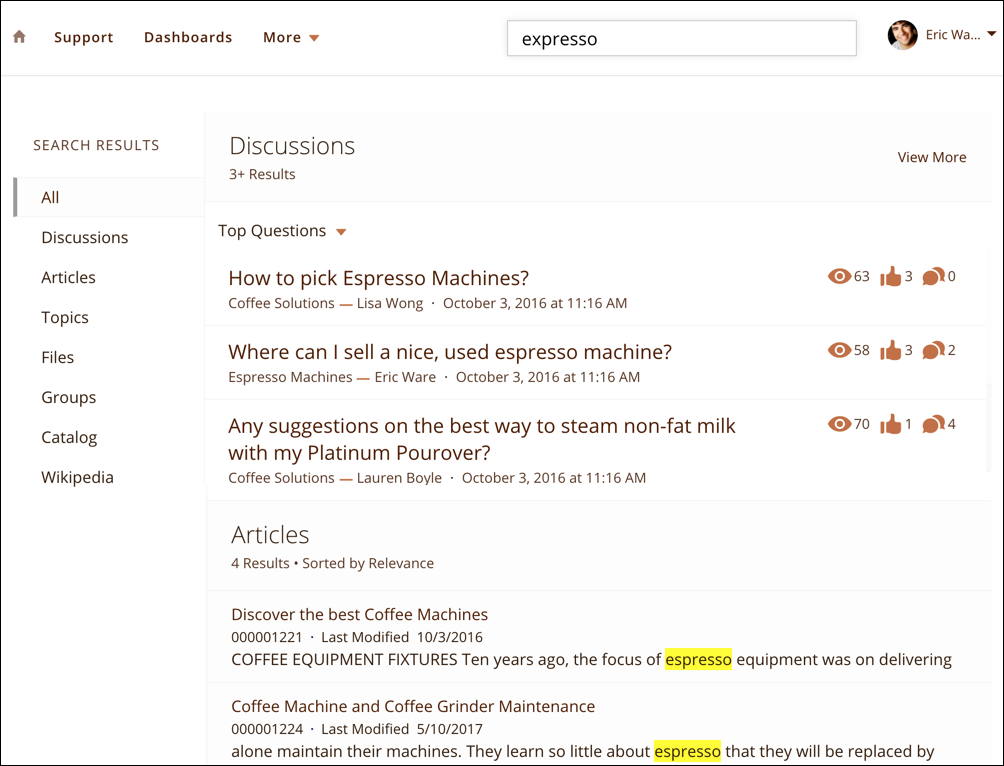Set Up Search Customizations
Learning Objectives
- Describe how to set up a synonym group.
- Explain how Federated Search works.
Set Up Synonym Groups
Somewhere in Capricorn Coffee’s customer site, a heated debate is under way, prompted by a simple and innocent question: “Is it espresso or expresso?”
It’s possible that the members never reach a satisfying conclusion, but we can. It’s good to keep in mind that different people use different words to describe the same thing. This is especially good to keep in mind when you’re setting up your site's search features.
As you can imagine, Capricorn Coffee’s site unity has more than a few articles about espresso. But Capricorn knows that at least a few people do look for those articles by using the search term expresso. Rather than wade into the terminology debate, Capricorn solves the problem by setting up a synonym group.
Synonym groups have words or phrases that are treated equally in searches. A search for one term in a synonym group returns results for all terms in the group.
Capricorn’s new synonym group contains two words: espresso and expresso. Now it doesn’t matter which term members use to search—they find the same articles either way.
Salesforce admins can create and edit synonym groups in the Salesforce org on all sites.
- From Setup, in the Quick Find box, enter
Synonyms. Under Einstein, Einstein Search, select Synonyms. - Under Custom Synonym Groups, click New to start a synonym group, or Edit to change an existing group.

- Add two to six synonyms per group. A synonym can be any word or phrase. No special characters.

- Choose a language for the synonym group by clicking on a language name, then clicking the right arrow.
- Click Save.
And, voila! Now customers won’t wind up empty-handed, even when they use variations of a term. In Capricorn’s site, for example, a search for expresso now turns up discussions, articles, and other results that use the term espresso.

Later in this module, we discuss how to use reports with data about users’ search terms to create synonym groups that serve your site.
Add Search Results from External Sources with Federated Search
There’s a lot of information out there on the internet. Why not use it? It’s great to create content for your site that’s specific to your customers and their needs. Sometimes, though, a Wikipedia article can do just fine. With Federated Search, you can serve up all kinds of outside content, right inside your site.
Here’s a quick rundown of how it works. Salesforce has partnered with external search providers Docurated, and Swiftype, so your users can search any of the sites that they search—Google, YouTube, Wikipedia, Confluence, SharePoint, and many others. After the Salesforce admin connects the external search provider as an external data source, the site moderator can add the external data source like any other object.
When everything is set up, search results from external sources appear on the same page as your site's other search results.
We don’t go into the details of setting it up here, since that’s a project for another time. But if you’re ready to go, you can find step-by-step instructions here.
